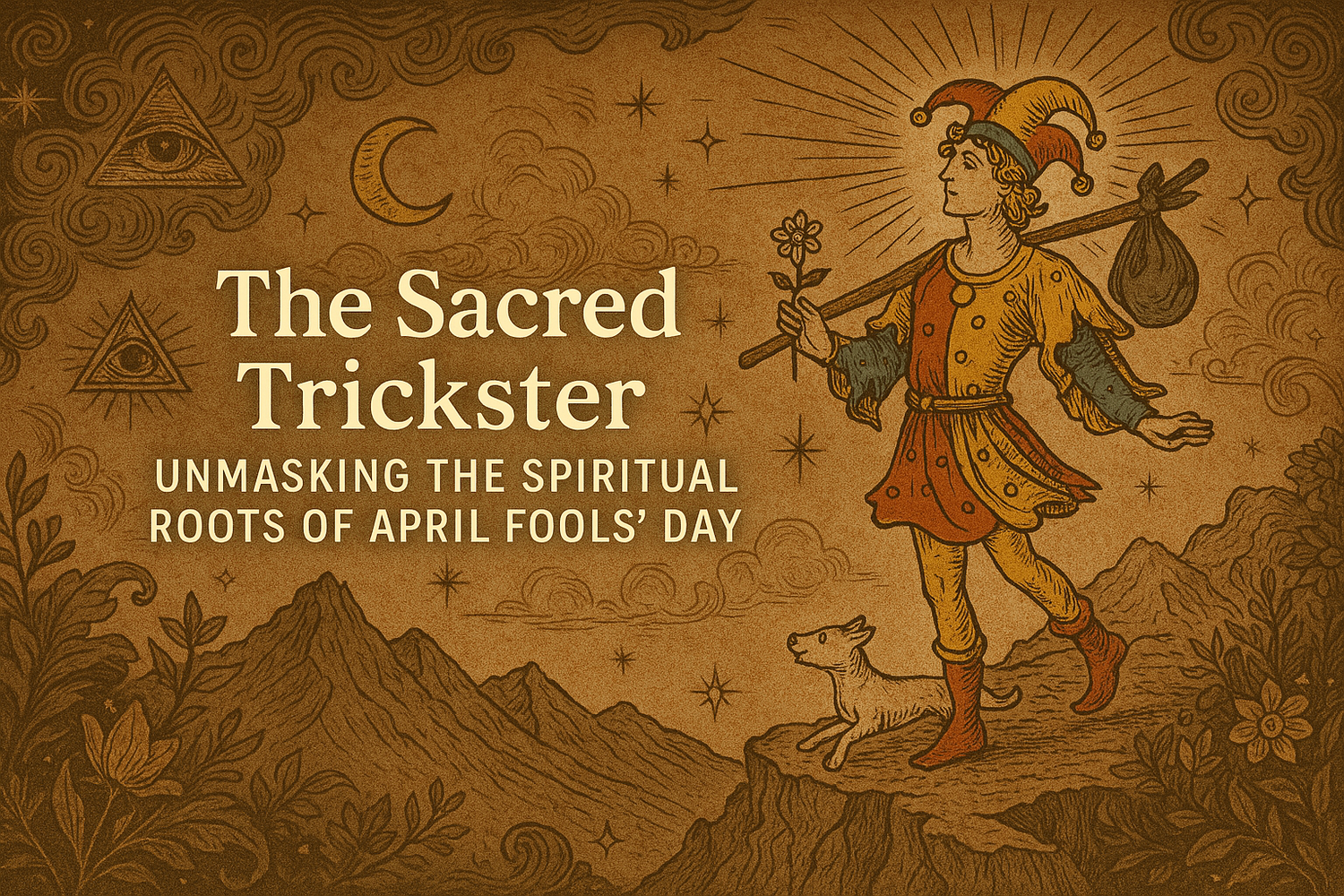Divine Comedy in a Chaotic World
When we think of spirituality, we often imagine solemn silence, deep meditation, or awe-inspiring rituals beneath moonlit skies. Rarely do we picture belly-laughs, trickster spirits, or cosmic jokes. But what if humor was just as sacred as stillness? What if laughter wasn’t a distraction from the divine, but a direct portal to it?
Mystics, sages, and shamans across cultures have long whispered this strange truth:
“The veil is thinnest when we laugh.”
And perhaps the cosmic trickster—the same spirit that dances through dreams, riddles, and pranks—isn’t just playing with us... but leading us home.
The Hidden Wisdom in Foolishness
Let’s get one thing straight: the Fool is not a fool. Not really.
In Tarot, the Fool is the very beginning of the spiritual journey—Card 0. They represent innocence, openness, and boundless potential. They walk toward the unknown with a flower in one hand and trust in the other. That blind optimism? That “foolish” grin? It’s not ignorance—it’s surrender.
The Fool doesn’t know what’s coming, and that’s exactly why they’re ready to face it. They have no agenda. No pride. No fear. And through their lightheartedness, they remain open to the universe in a way the hardened mind cannot.
The Trickster in the Sacred Stories
From Loki and Hermes to Coyote and Anansi, trickster gods show up in almost every mythology. These aren’t villains or clowns—they’re divine catalysts.
They:
-
Expose lies through play
-
Challenge authority with laughter
-
Break rigid patterns
-
Shake loose what’s stuck
In essence, they liberate.
The trickster isn’t here to humiliate—it’s here to awaken. Sometimes with chaos. Sometimes with charm. But always with the deeper intention of helping us break free.
Humor as a Spiritual Practice
Think about it: what happens when you laugh?
-
Your body releases stress.
-
Your breath deepens.
-
Your heart opens.
-
Time stops.
-
You become present.
In that sacred moment of laughter, ego dissolves. Judgment fades. The world seems softer, lighter, a little less rigid.
This is mystical energy in motion.
Even mystic poet Rumi wrote:
“Try to be like the turtle—at ease in your own shell, and slow enough to laugh at God’s jokes.”
He wasn’t mocking the divine—he was inviting us to join in the cosmic comedy. To see how beautifully absurd life can be.
Laughter as Alchemy
In magical traditions, transformation is everything. Turning lead into gold. Pain into purpose. Fear into wisdom.
And what’s one of the quickest transmutations we can feel?
Pain into laughter.
Think of the last time you cried so hard you had to laugh—or laughed so hard you cried. In that liminal space, something shifted. That’s emotional alchemy. That’s sacred.
It’s also healing. Studies show laughter boosts immunity, reduces cortisol, increases pain tolerance, and even shifts brain chemistry. But in the metaphysical sense? It opens the heart chakra, lifts vibration, and clears emotional blockages.
Holy Fools and Laughing Saints
It’s not just folklore or mysticism. Even in more formal religions, holy fools exist.
-
St. Francis of Assisi danced in rags and made joyful songs to the sun and moon.
-
Sufi dervishes twirled in ecstatic bliss, singing praise through laughter and movement.
-
Zen masters told nonsensical riddles and burst into wild laughter when enlightenment hit.
They were ridiculed, even feared. But they weren’t trying to fit in. They were channeling truth in a language too light for heavy minds.
And that’s the thing—sacred foolishness bypasses logic. It speaks directly to the soul.
The Role of April Fools in All This
Now let’s circle back to April Fools’ Day.
A silly holiday? Sure. But also, perhaps, a thin place—a liminal crack in the year’s wheel where we’re invited to set down seriousness and play with the divine.
Historically, April 1st comes just after the Spring Equinox and at the start of the astrological new year in Aries—a sign of rebirth, action, and impulsive joy.
Ancient cultures held springtime festivals filled with jest, reversal, and divine nonsense—like the Roman Hilaria or the Feast of Fools. These were not just jokes for entertainment—they were spiritual purges, ways to shake off winter’s weight and invite new light.
Modern April Fools may not be as symbolic—but the energy remains. It’s a reminder to laugh at yourself, the world, and the illusions we take too seriously.
Sacred Foolishness in Daily Life
So, how can you integrate sacred foolishness into your spiritual practice?
Here are a few ideas:
✧ Laugh Intentionally
Watch a ridiculous movie. Tell jokes with your ancestors. Yes, literally. Light a candle, invite their spirits, and share a giggle. Joy transcends dimensions.
✧ Trick Your Ego
When you catch yourself spiraling into fear or perfectionism, flip the script. Say, “Oh look, I’m being a silly little human again!” Not as self-shame, but self-love.
✧ Celebrate Absurdity
Wear mismatched socks. Speak in rhyme for an hour. Make friends with chaos. It reminds your nervous system that you’re safe, even when things don’t make sense.
✧ Let Go
Let go of needing to know, needing to be right, needing to control. The Fool walks the edge of the cliff not because they’re dumb—but because they trust the leap.
The Laughing God Within
Some say the universe began not with a bang, but with a laugh—a ripple of cosmic joy echoing into existence. Whether myth or metaphor, it reminds us: we weren’t meant to suffer our way to enlightenment.
We were meant to dance, play, cry, laugh, fall down, and get back up again with grass in our hair and stardust in our bones.
So when the world feels too heavy, ask yourself:
“What would the sacred fool do?”
And then—do it.
With joy.
With wonder.
With your arms wide open to the unknown.
Because sometimes, the joke is the answer.
And that answer might just set you free.



